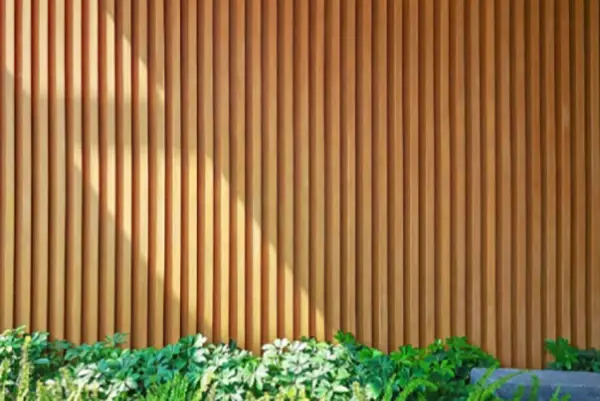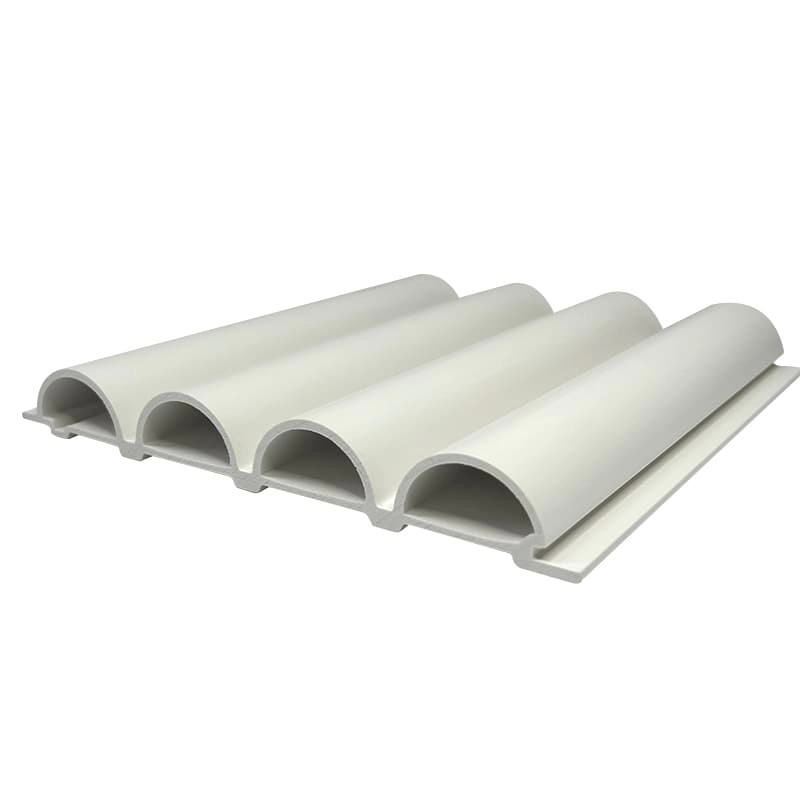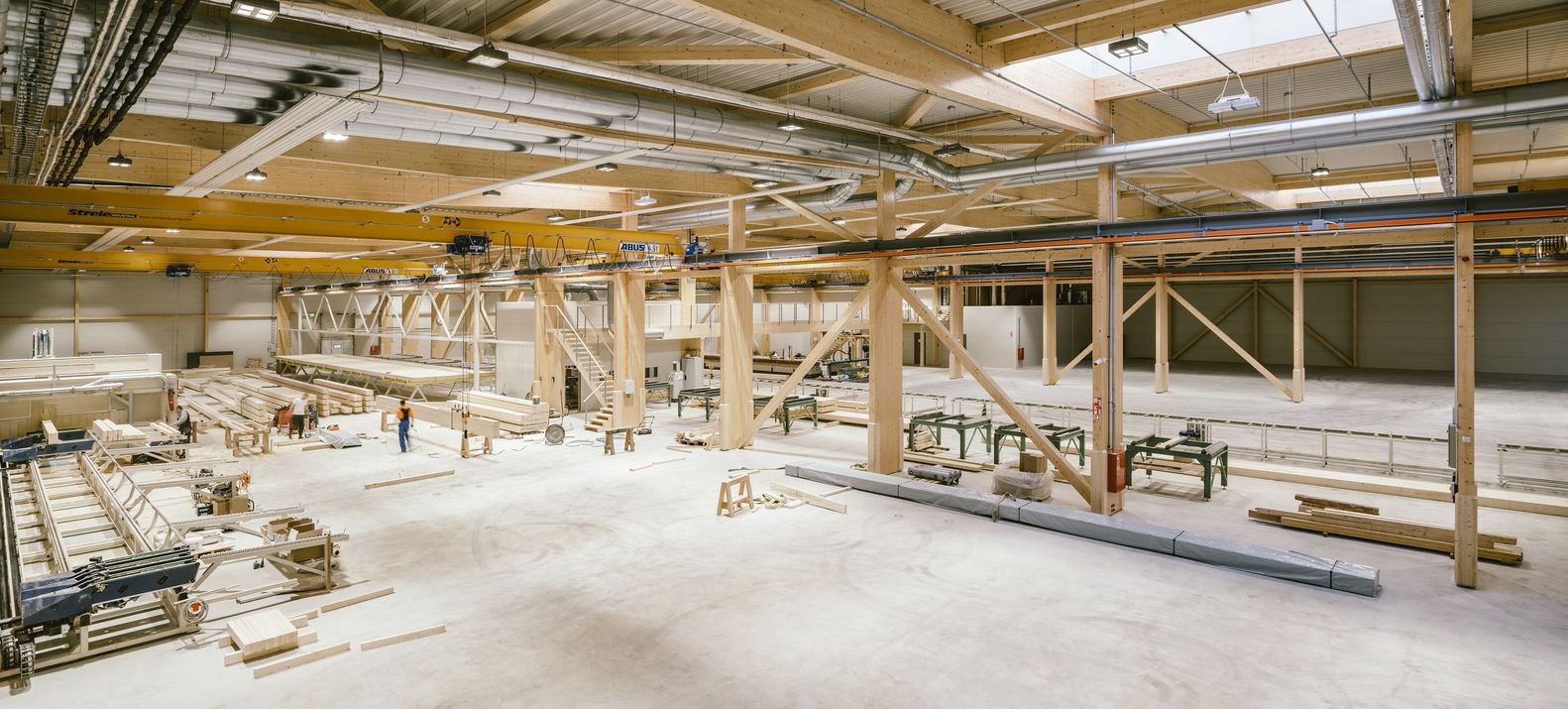CATEGORIES
WPC Fluted Wall Panels vs. PVC: Your Guide to Making an Informed Choice for Modern Wall Cladding
In the ever-evolving world of interior design, fluted panels have emerged as a star, transforming ordinary walls into captivating focal points. If you're considering an upgrade from a traditional wall, you've likely encountered two leading wall materials: WPC (Wood Plastic Composite) and PVC (Polyvinyl Chloride) fluted wall panels. This article is your comprehensive guide to understanding the WPC vs PVC debate. We'll delve into their unique characteristics, explore the aesthetic appeal of each panel, discuss potential disadvantages, and ultimately help you make an informed choice for your next interior design project. Whether you're an architect, an interior designer, a home improvement retailer like my valued customer Mark Wilson, or a real estate developer, understanding the nuances of each wall material will ensure your aesthetic preference is met with lasting quality and functionality. Here at our factory, we've seen firsthand how the right panel choice can elevate a space, and I, Allen, want to share that insight with you.
What Exactly Are Fluted Panels and Why Are They Trending in Wall Materials?
Fluted panels are a type of decorative panel characterized by a series of vertical, parallel grooves or "flutes" that create a unique three-dimensional texture. This design adds depth, visual interest, and a touch of sophistication to any surface they adorn. Unlike a flat, traditional wall, a fluted panel interacts with light and shadow, creating dynamic patterns that can make a room feel taller, more spacious, or simply more engaging. The rise in popularity of these panels can be attributed to several factors. Firstly, their modern yet timeless aesthetic fits a wide range of interior design styles, from minimalist and contemporary to art deco and even modern rustic. They offer a significant upgrade in wall decoration compared to simple paint or wallpaper.
Secondly, the versatility of fluted panels is a major draw. They can be used as accent walls, full room wall cladding, on ceilings, cabinet fronts, or even to create bespoke furniture pieces. This adaptability makes them a favorite among designers looking to add a signature touch to an interior design project. As we move away from some traditional materials, the demand for innovative wall materials like WPC and PVC fluted panels has surged. They offer a compelling combination of style, practicality, and often, an easier installation process, making them an attractive option for both residential and commercial spaces. The texture they provide is a significant upgrade over a simple painted panel.

Understanding the Core Materials: What is WPC (Wood Plastic Composite) Panel?
WPC, or Wood Plastic Composite, is an innovative material created by blending wood fibers or wood flour with a thermoplastic resin, such as polyethylene (PE), polypropylene (PP), or sometimes PVC. This combination results in a panel that ingeniously marries the natural aesthetic and warmth of real wood with the durability and low-maintenance benefits of plastics. The wood fibers give WPC panels a distinct character, often closely mimicking the look and feel of traditional wood, which is a huge plus for those who love a warm and natural ambiance. We often find that customers seeking a rustic yet refined look gravitate towards our WPC fluted wall panels.
One of the key advantages of a WPC panel is its enhanced resistance to common wood issues. Unlike traditional wood, WPC is less susceptible to rot, insect attacks, and moisture-induced warping or cracking, especially when properly formulated with the right additive components. Many WPC products, including WPC fluted panels, are also considered more eco-friendly as they often utilize recycled materials – both waste wood fibers and reclaimed plastics. This makes them a popular choice for sustainable building projects. The versatility of WPC fluted designs means they can be used in various applications, from living room accent walls to office partitions, providing both functional and decorative benefits. The substantial feel of a WPC panel also adds to its perceived quality.
Exploring PVC (Polyvinyl Chloride): What Makes This PVC Fluted Panel Unique?
PVC, or Polyvinyl Chloride, is a widely used synthetic plastic polymer. PVC panels, including PVC fluted panels, are made of polyvinyl chloride resin, often with added plasticizers and stabilizers to enhance their properties. What makes a PVC panel particularly unique and popular in the realm of wall materials is its exceptional waterproof nature. This inherent quality makes PVC fluted panels an ideal choice for areas prone to moisture, such as bathrooms and kitchens, where traditional materials or even some WPC panels might struggle over time. Their imperviousness to water means they won't swell, rot, or harbor mold when exposed to humidity.
Another significant characteristic of PVC panels is their lightweight construction. This makes them easier to handle, transport, and install, often reducing labor costs and installation time. From a design perspective, PVC is incredibly versatile. It can be manufactured in a vast array of colors, patterns, and finishes. PVC fluted panels can convincingly mimic other materials like real wood, natural stone, or metal, or they can feature sleek, high-gloss finishes perfect for contemporary and minimalist designs. This adaptability in aesthetic allows for a broad spectrum of design possibilities. Furthermore, PVC panels are known for their durability and being extremely easy to clean – usually, a quick wipe with a damp cloth is all that's needed for their upkeep, making them a very low-maintenance panel option.
WPC vs PVC Fluted Panels: A Detailed Comparison of Key Differences
When deciding between WPC and PVC fluted panels for your interior design project, understanding their core differences between WPC and PVC is crucial. Both offer modern alternatives to traditional wall treatments, but their composition, performance, and aesthetic qualities vary. This comparison will help you make an informed choice based on your specific requirements.
Here's a table summarizing the key distinctions between a WPC panel and a PVC panel:
| Feature | WPC (Wood Plastic Composite) Panel | PVC (Polyvinyl Chloride) Panel |
|---|---|---|
| Composition | Wood fibers/flour + thermoplastic (resin) | Polyvinyl chloride resin + additives |
| Appearance | More closely mimics the appearance of real wood, natural texture | Highly versatile: solid colors, wood grains, stone, metallic, high gloss |
| Water Resistance | Water-resistant, but not fully waterproof (depends on PVC content & additive) | Fully waterproof |
| Durability | Good; resistant to rot, insects. Can be dented. | Very good; resistant to fading, impact (depends on hardness), moisture. |
| Weight | Heavier | Lightweight |
| Eco-friendliness | Often uses recycled materials (wood and plastic) | Recyclable; production of polyvinyl chloride can be energy-intensive. |
| Cost | Generally mid-range to higher | Often more budget-friendly to mid-range |
| Texture | Often a more matte, natural feel due to wood fibers. | Can range from matte to very sleek and glossy. |
| Installation | Tongue-and-groove, clips, adhesives. Standard wood tools. | Lightweight, easy to cut, often tongue-and-groove. |
| Insulation | Offers some thermal and acoustic insulation. | Offers some thermal and acoustic insulation. |
While both WPC and PVC fluted panels are excellent wall materials, the choice between WPC and PVC often comes down to the specific application and desired aesthetic. WPC panels excel in providing a warm and natural wood-like appearance, making them ideal for living spaces and areas where a touch of nature is desired. PVC panels, with their superior water resistance and broader range of finishes, are champions in wet areas and for achieving ultra-modern or specific patterned looks. Each panel type presents a unique set of advantages for your wall decoration needs.

Which Panel Offers Better Durability and Low Maintenance for Your Walls?
When it comes to durability and low maintenance, both WPC and PVC fluted panels offer significant advantages over many traditional materials. However, there are nuances to consider. WPC panels, thanks to their composite nature of wood fibers and thermoplastic, are inherently resistant to common wood ailments like rot, decay, and insect infestation. They are less likely to splinter or crack compared to traditional wood. This makes them a durable panel choice for many indoor applications. Maintenance for WPC panels is generally straightforward, usually requiring just occasional cleaning. However, depending on the finish and specific composition, some WPC panels might benefit from a protective seal if used in areas with higher wear, though many modern WPC fluted wall panels are designed to require minimal maintenance.
PVC panels, on the other hand, are renowned for their exceptional durability, particularly their waterproof quality. Being entirely plastic, a PVC panel will not absorb moisture, making it impervious to swelling, warping, or mold growth – a critical factor for longevity in humid environments. They are also highly resistant to staining and fading, maintaining their aesthetic appeal for years. The hardness of a PVC panel can vary, with higher-quality options offering better impact resistance. In terms of low-maintenance, PVC fluted panels are top-tier. They are incredibly easy to clean, typically needing only a wipe with a damp cloth and mild detergent to remove any dirt or grime. This ease of upkeep contributes to reducing long-term maintenance costs significantly. For projects where ultimate water resistance and minimal fuss are paramount, a PVC panel often takes the lead.
What Are the Aesthetic Possibilities and Design Preferences with WPC and PVC Fluted Panels?
The aesthetic versatility of WPC and PVC fluted panels is a primary reason for their growing popularity in interior and exterior wall cladding. Each panel type caters to different design preferences and opens up a world of creative design possibilities. WPC panels, with their embedded wood fibers, inherently offer a warm and natural aesthetic. They beautifully mimic the look and feel of real wood, bringing an organic, inviting ambiance to any space. Whether you're aiming for a cozy rustic charm or a sophisticated, nature-inspired modern look, WPC fluted panels deliver. The texture is often more matte and tactile, enhancing the natural look. While the base panel has a wood-like appearance, various films and laminates can be applied to offer a range of color options and wood species finishes, further expanding their decorative potential.
PVC fluted panels, in contrast, offer an even broader spectrum of aesthetic choices. Due to their synthetic nature, PVC panels can be manufactured in virtually any color, pattern, or finish imaginable. This includes vibrant solid colors, realistic wood grains (though sometimes less tactile than WPC), elegant natural stone effects like our popular PVC marble sheets, metallic sheens, and ultra-sleek high-gloss surfaces. This makes PVC a versatile material for achieving very specific design visions, from bold, contemporary statements to subtle, minimalist designs. If your interior design project calls for a highly customized or unique wall decoration, PVC fluted panels provide unparalleled flexibility. These panels offer a wide range of styles, ensuring that no matter your preference, there's a PVC panel to match. The choice of panel can dramatically influence the final ambiance of both residential and commercial spaces.
How Easy is the Installation Process for WPC and PVC Wall Panels?
One of the significant advantages of both WPC and PVC wall panels over traditional wall materials like tiles, stone, or extensive plasterwork is the relative ease and speed of installation. This can translate to lower labor costs and quicker project completion times – a key consideration for construction companies and procurement officers like Mark Wilson. Generally, these panels are designed for straightforward fitting, often utilizing tongue-and-groove systems that allow each panel to click neatly into the next, ensuring a seamless finish.
WPC panels, while heavier than PVC, can typically be cut and worked using standard woodworking tools. They can be installed by screwing them directly to the wall, using clips, or applying construction adhesive to a prepared substrate. It's important to ensure the underlying wall surface is relatively even for the best results. The installation of a WPC panel is generally manageable for professionals and even skilled DIYers. PVC panels are notably lightweight, which simplifies handling and installation even further. This makes them particularly easy to manage, especially for ceiling applications or large wall expanses. Similar to WPC, PVC fluted panels often feature interlocking edges and can be fixed using adhesives, screws, or staples. Their ease of cutting (often with a simple utility knife for thinner panels or a fine-toothed saw for thicker ones) also speeds up the installation process. Proper surface preparation is key for any panel installation to achieve a professional and lasting finish.
Are WPC and PVC Fluted Panels an Eco-Friendly Choice Among Wall Materials?
The environmental impact of building wall materials is an increasingly important consideration for many, including clients like Mark who value certifications and sustainable practices. When comparing WPC and PVC fluted panels, both present certain eco-friendly aspects, though with some differences. WPC panels often score well in sustainability because they are frequently made from recycled materials. The wood fibers can come from sawmill byproducts or post-consumer wood waste, and the thermoplastic component can incorporate recycled plastics. This use of reclaimed resources helps divert waste from landfills and reduces the demand for virgin materials. Furthermore, the durability of WPC panels means less frequent replacement, contributing to resource conservation over the product's lifespan.
PVC panels are also recyclable. Many manufacturers are now part of take-back programs or use recycled PVC content in their new panels. However, the production of virgin polyvinyl chloride itself involves chlorine and can be energy-intensive, which has raised environmental concerns in the past. It's important to note that the industry is making strides in improving the lifecycle of PVC, including developing bio-based plasticizers and more energy-efficient manufacturing processes. When choosing a PVC panel or any panel, looking for products with recycled content and environmental certifications can help ensure a more environmentally friendly choice. Compared to some traditional materials that may involve extensive quarrying or logging of non-renewable resources, both WPC and PVC panels can offer a more sustainable wall cladding alternative, especially when sourced from responsible manufacturers who prioritize high-quality, eco-conscious production.
Addressing a Common Concern: What is a Potential Disadvantage of WPC or PVC Panels?
While WPC and PVC fluted panels offer numerous benefits, it's also important to acknowledge any potential disadvantage to make a truly informed decision. No material is perfect for every single application, and understanding these limitations is key for selecting the right panel for your project’s specific requirements and design preferences.
A potential disadvantage of WPC panels can be their weight; they are generally heavier than PVC panels, which might make installation slightly more laborious, especially for ceiling applications or by a single person. While WPC is water-resistant, it's typically not fully waterproof like PVC. In environments with constant, heavy exposure to moisture, such as shower enclosures, some lower-quality WPC panels (especially those with lower thermoplastic content or improper additive mixing) might eventually be susceptible to moisture ingress if edges are not properly sealed. Furthermore, while durable, the wood fibers component means a WPC panel can sometimes be more prone to scratching or denting under heavy impact compared to a very hard PVC panel.
For PVC panels, a commonly cited disadvantage is that some people find their aesthetic less "natural" than WPC, particularly when trying to mimic real wood. While high-quality PVC can achieve very realistic wood looks, the tactile feel might differ. There can also be concerns about the environmental footprint of polyvinyl chloride production, as mentioned earlier, although advancements are being made. Another point is that while PVC is tough, lower-density or thinner PVC panels can sometimes be brittle or prone to cracking under sharp impact, so opting for a panel with good hardness and thickness is advisable. Finally, like many plastics, the performance of a PVC panel in extreme temperatures (both hot and cold) should be considered, though this is usually more relevant for exterior applications, and for indoor use, it's generally not an issue with quality panels. Choosing a high-quality panel from a reputable supplier like us can mitigate many of these potential drawbacks.
How Do You Choose the Right Fluted Panel for Your Interior Design Project?
Selecting the right fluted panel from the diverse options of WPC and PVC fluted panels ultimately depends on your project’s specific needs, aesthetic goals, and budget. The choice between WPC and PVC panel solutions isn't about which is universally "better," but which is better suited for your unique context. By carefully considering a few key factors, you can confidently make an informed choice that will enhance your space for years to come.
First, evaluate the location and environment where the panel will be installed. For high-moisture areas like bathrooms and kitchens, or even basements, the superior waterproof properties of PVC panels make them an excellent choice. For living rooms, bedrooms, or office spaces where a warm and natural ambiance is desired, the wood fibers in WPC panels offer a compelling natural aesthetic. Secondly, consider your desired aesthetic preference. If the goal is to achieve the closest look and feel to real wood, a WPC fluted panel is often preferred. If you're seeking a wider range of color options, patterns (like marble or metallic), or a very sleek, modern finish, then PVC fluted panels to help you make this vision a reality offer greater versatility. Your budget will also play a role; generally, PVC panels can be more cost-effective, though high-quality versions of both WPC and PVC panels can have overlapping price points. Durability needs for the specific panel application (e.g., high-traffic commercial vs. low-traffic residential) and the ease of installation might also sway your decision. Always align your choice with your project’s specific requirements and design preferences.
Why Partner with a Reliable Factory for Your High-Quality WPC and PVC Panel Needs?
As Allen, with years of experience in manufacturing WPC and PVC panels right here in our 7-production line facility, I can't stress enough the importance of partnering with a reliable factory. For discerning buyers like Mark Wilson, who prioritize quality but also seek competitive pricing, a direct relationship with a manufacturer offers immense benefits. When you work with us, you're not just buying a panel; you're investing in a partnership built on trust and transparency. We oversee every step, from sourcing high-quality materials – be it the right grade of wood fibers and thermoplastic resin for our WPC fluted panels, or the premium polyvinyl chloride and additive packages for our PVC panels – to meticulous quality control throughout the production of each panel. This ensures consistency and performance in every decorative panel we ship.
A direct factory partnership means you benefit from competitive pricing by cutting out intermediaries. It also opens doors to greater customization. Need a specific color option, texture, or panel dimension for your interior design project? We can often accommodate such specific requirements. One of Mark's pain points is inefficient communication; we address this by providing dedicated sales representatives who understand the technical aspects of our WPC panels and PVC products, like our versatile decorative wall panels or our stunning UV marble sheets. We also understand the critical importance of certifications (fire safety, environmental standards) and can provide legitimate documentation, alleviating concerns about fraud. Efficient logistics and reliable payment methods are part of our standard service, ensuring your panels arrive on time and your transactions are secure. Choosing the right supplier for your panel needs is as crucial as choosing the right wall materials.
In conclusion, both WPC and PVC fluted panels offer exciting and practical solutions for modern wall cladding, moving far beyond the limitations of a traditional wall. Understanding their distinct properties is key to selecting the ideal panel for your needs.
Here’s a quick recap of what to remember:
- Define Your Needs: The choice between WPC and PVC panel solutions fluted panels ultimately depends on your project’s specific requirements and design preferences, especially considering moisture exposure and desired aesthetic.
- WPC for Natural Warmth: If a natural look and the feel of wood fibers are paramount, WPC fluted panels are an excellent choice, offering good durability and often incorporating recycled materials.
- PVC for Versatility & Water Resistance: For ultimate waterproof performance, a wide array of decorative finishes, and often a more budget-friendly panel price, PVC fluted panels shine. They are lightweight and exceptionally low-maintenance.
- Installation and Maintenance: Both panel types are generally easier to install than many traditional materials and require minimal maintenance, contributing to their popular choice status.
- Consider Potential Disadvantages: Be aware of the slight disadvantage of each panel type (e.g., WPC weight/water resistance limits, PVC’s perceived naturalness) and choose high-quality products to mitigate them.
- Supplier Matters: Partnering with a reputable factory like ours at XihongBM ensures access to high-quality materials, reliable information, and support to help you make an informed decision for your wall decoration projects.
By weighing these factors, you can confidently select the perfect fluted panel—be it WPC or PVC—to bring your interior design vision to life.





